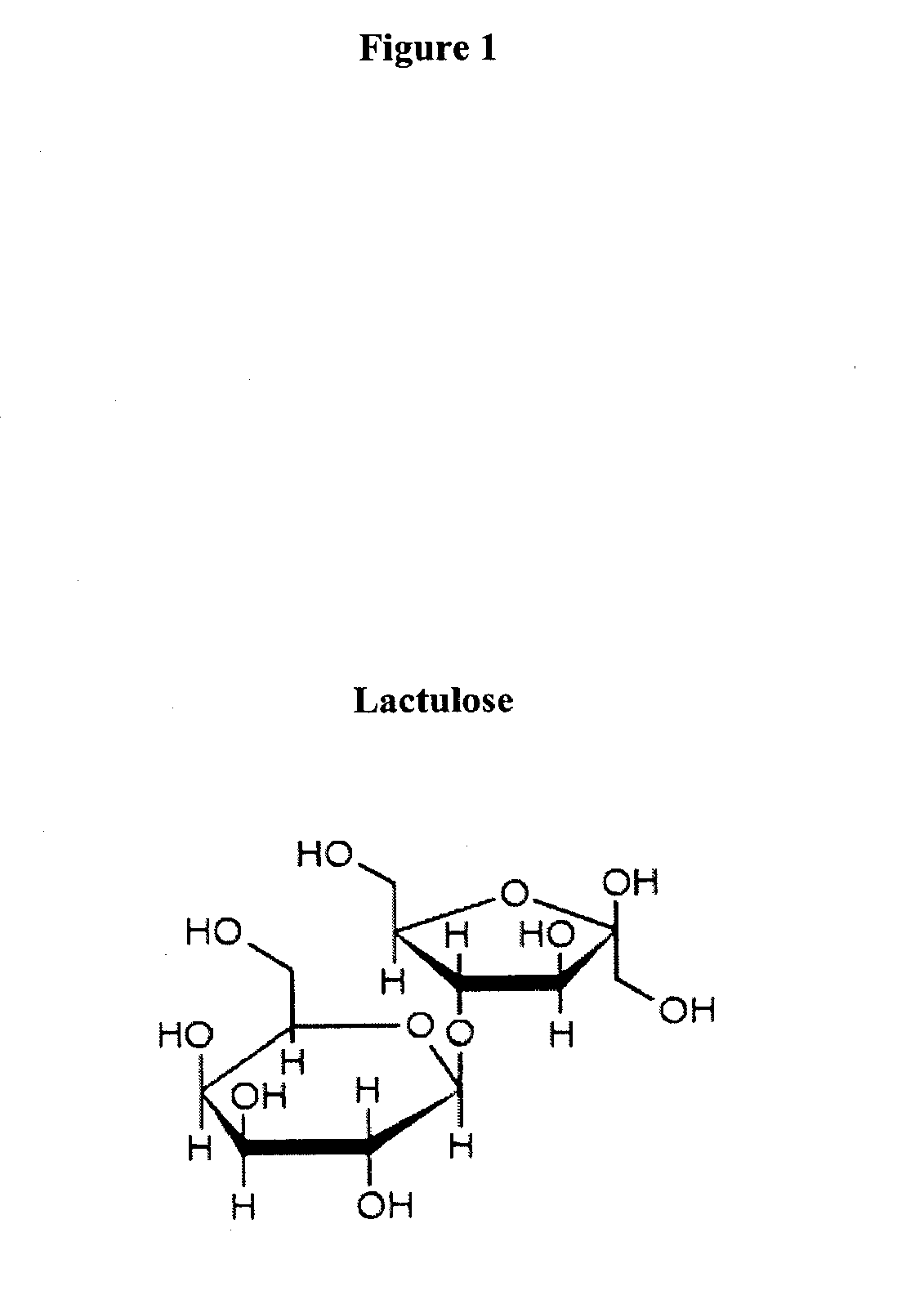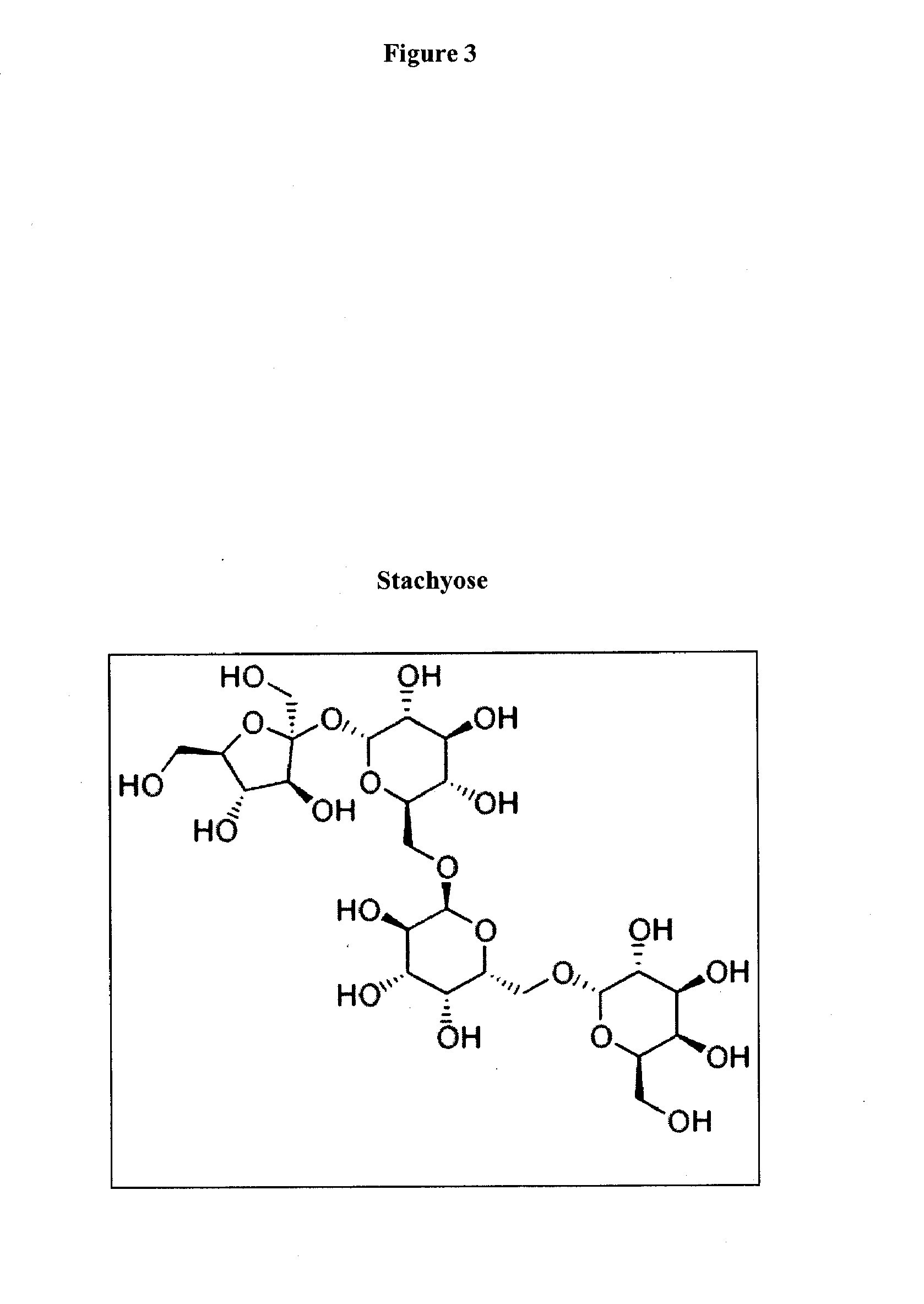Prebiotic formulations and methods of use
- Summary
- Abstract
- Description
- Claims
- Application Information
AI Technical Summary
Benefits of technology
Problems solved by technology
Method used
Image
Examples
example 1
Clinical Trial Synopsis
[0314]A Phase 2b, multicenter, randomized, placebo-controlled trial will be conducted of RP-G28—(a 96% GOS composition, by weight) versus placebo in subjects with moderate to severe symptoms on a hydrogen breath test, milk challenge, and stool bacterial analysis that are associated with lactose intolerance.
[0315]There will be two primary study objectives of the clinical trial:
[0316]1. The first primary objective will be to assess the ability of a 30 day treatment with RP-G28 to improve lactose digestion and tolerance in 60 subjects in comparison with placebo (n=30), and to determine if their symptoms caused by a lactose challenge during their Hydrogen Breath Test (HBT) are reduced 90 days after the end of treatment, and to demonstrate that any effect observed at the end of the 30 days persists for at least 90 days after treatment is completed.
[0317]2. The second primary objective will be to assess the safety of RP-G28 in this population by assessing adverse ev...
example 2
Study of GOS Treatment of Subjects
[0372]Subjects will take a 90% purity level GOS compound according to the schedule in Table 8. The subjects will be instructed to daily measure the exact dosage amount in Table 8 with the scoops provided and mix the powder in 6 to 8 ounces (about 170 to 226 g) of room temperature water. The mixtures will be stirred for 2 minutes before drinking. Alternatively, subjects will take gel capsules containing GOS. Subjects will be instructed not to skip any doses; if dosing for a day is forgotten, subjects will be instructed to back up a day in the routine and not to double on doses. The subjects will conduct self reported symptom scoring before, after, and 30 days thereafter program. A likert scale scoring system will be used: 1-5 symptom rating [(1) no symptoms, (2) minor symptoms, (3) moderate symptoms, (4) strong symptoms, (5) severe symptoms)] of subject's reported gas, cramps, bloating and / or diarrhea from dairy consumption.
TABLE 8Dosing schedule for...
example 3
Growth of Lactobacillus and Bifidobacterium Strains in a GOS Solution
[0373]The growth of Lactobacillus and Bifidobacterium strains was evaluated in scratch MRS (Table 9) supplemented with either 2% glucose or 2% GOS and automatically monitored by determining the change in absorbance (A600) as a function of the time using a FLUOStar OPTIMA microtiter plate reader. The strains were incubated at 37° C. aerobically. Results are shown in FIG. 12. Some strains were grown under anaerobic conditions at 37° C. and OD's were read manually over time, when indicated.
TABLE 9Scratch MRS formula:ReagentsAmount (g) per literProteose peptone N310.0Beef extract10.0Yest extract5.0Polysorbate 801.0Ammonium citrate2.0Sodium acetate5.0Magnesium sulfate0.1Manganese sulfate0.05Dipotassium phosphate2.0Glucose or GOS20
PUM
| Property | Measurement | Unit |
|---|---|---|
| Fraction | aaaaa | aaaaa |
| Fraction | aaaaa | aaaaa |
| Mass | aaaaa | aaaaa |
Abstract
Description
Claims
Application Information
 Login to View More
Login to View More - R&D
- Intellectual Property
- Life Sciences
- Materials
- Tech Scout
- Unparalleled Data Quality
- Higher Quality Content
- 60% Fewer Hallucinations
Browse by: Latest US Patents, China's latest patents, Technical Efficacy Thesaurus, Application Domain, Technology Topic, Popular Technical Reports.
© 2025 PatSnap. All rights reserved.Legal|Privacy policy|Modern Slavery Act Transparency Statement|Sitemap|About US| Contact US: help@patsnap.com



